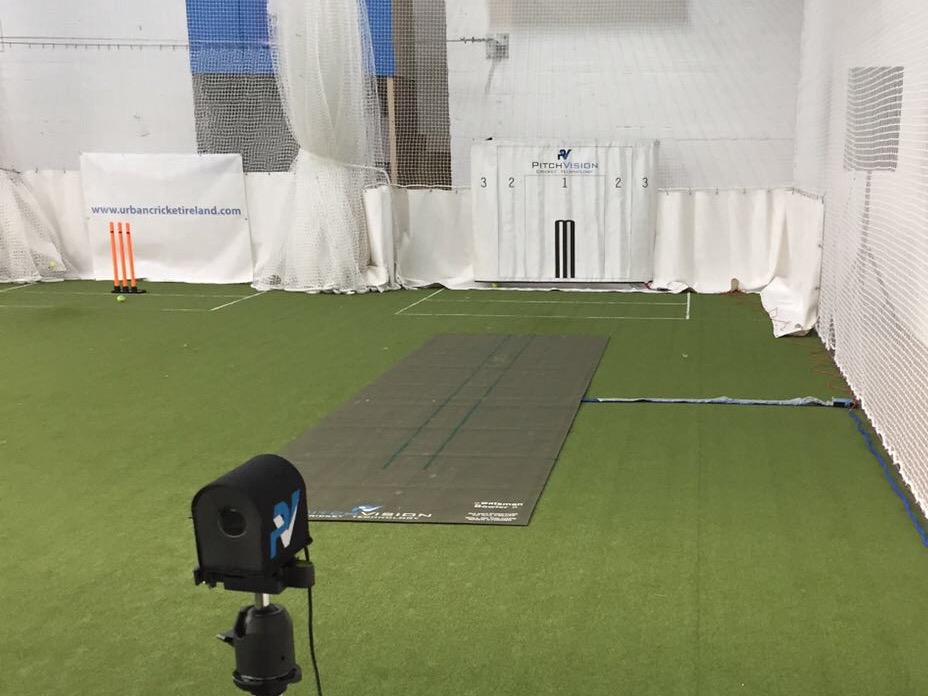Improve Your Fast Bowling Run Up Speed with These Drills
 What do we want a fast bowler’s run up to achieve?
What do we want a fast bowler’s run up to achieve?
We already know from my last article that run up speed is a great way to bowl faster. So let’s look in more detail at the run up.
Keeping this fairly simple, we want a run up to get up to a high speed, achieving peak speed in the few steps preceding the take off.
This creates a jump that is longer than it is high.
From here, the landing must get your feet lined up in a manner that is neither closed off, nor significantly open.
Finally, and this one’s important, it must be repetitive.
To challenge how we run, we can progressively overload it in a variety of ways.
Line sprints
I do a lot of these throughout the year with the bowlers I work with. Very simply, it involves running from a standing start along a straight line (there are loads of these on any sports hall floor), until a top speed is achieved.
Fast bowlers will often say that if they run “too fast” they feel off balance or lose body control. But to become more comfortable at that speed, a bit of repetition and overloading the process can do wonders.
The aim of a line sprint is to achieve controlled acceleration towards a top speed. I challenge bowlers to retain their head directly above the line. Now this doesn’t mean every bowler should run in gun barrel straight. From their starting point toward the direction they’re looking to project the ball. Cutting through the take off, landing point, making one long straight line. After all some bowlers like to approach from an angle. And some may find that a small angle helps them align their base or their body in preparation for delivery.
However, I would say that the angle shouldn’t be too steep, and it would ideally be direct in itself. Too much angle and not enough of the speed being developed is moving towards the target. While any run up that isn’t direct is subject to greater variability (in my experience). Straighter lines are much simpler to repeat, manage and assess.
So let’s get on with challenging that run up.
After the simple line sprint I have a series of variables that bowlers can work through, initially without a delivery at the end of the run up, but once a bowler is able to retain body control with speed then they can bowl or throw whatever it is they’re carrying.
Progressions
With a cricket ball in the bowling hand you move away from an athletic “sprint” style approach, driving the arms in straight lines, more towards a style that is less productive at generating speed and maintaining balance.
Use your arms to run, particularly accelerating.
You can also put a cricket ball in the non bowling hand.
A change such as this challenges balance and upper body / lower body synchronisation.
Other ways are:
- Run with A med ball held in both hands. This stops their arms working, which immediately disrupts a bowlers balance
- Run with a mini med ball in the bowling hand. I usually use a 600g ball. This is a great way to overload the bowlers control.
- Run with a mini med ball in the non-bowling hand.
- Under run. By reducing normal run up distance to 75% of usual approach, you’re forced into placing a greater emphasis on the acceleration phase and getting up to top speed sooner.
- Over run. Extending the approach length to approximately 125%, you’re challenging a bowler to retain top speed for longer.
These are just a few of the ways I like to overload the approach process of a bowler, you can be creative and find any number of different options, depending on what it is you’re trying the challenge; acceleration, top speed or balance.
Below are a few other ways you can challenge your run ups.
- Sled pulls
- Bungee runs (pulling from behind for power, either side for balance, or in front for over speed and control)
- Straight line bounds
- Right foot hops accelerating up to a top speed and into the delivery stride
- Left foot hops accelerating to a top speed at the point of take off
These are all different ways of developing that all important speed into take of, whilst keeping one eye on body control and balance throughout.
Never lose sight though of what we’re trying to achieve.
A high speed run up that is controlled and can be repeated over and over again. That allows the bowler to jump into a landing position where feet are well aligned.
Overloading anything will make it harder, and during the process using any of the above methods to challenge them, the quality of the delivery may appear to drop.
However, when we return to the less inhibited approach, we’ll hopefully start to reap the benefits of the overload.
- Login to post comments

